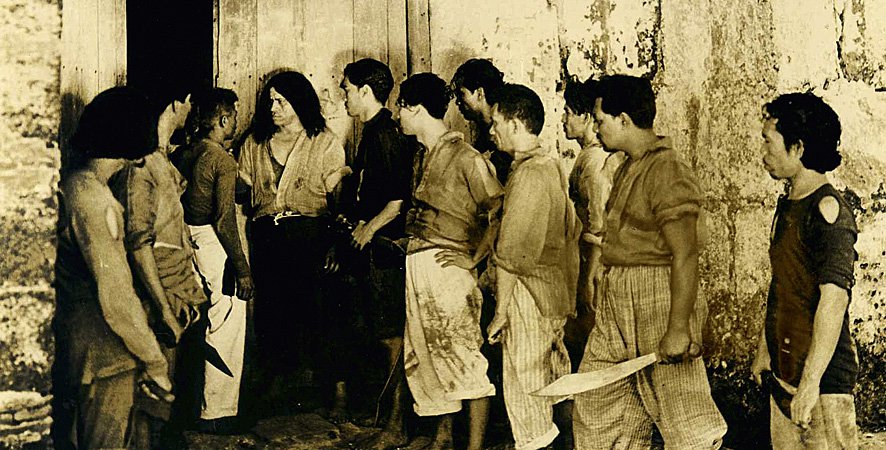Cultural Center of the Philippines
ENCYCLOPEDIA OF
PHILIPPINE ART
Sakay [1939]
1939 / Black and White / Historical Drama / Direction: Lamberto V. Avellana / Story and Screenplay: Daisy Hontiveros-Avellana / Cinematography: William Jansen / Produced by Filippine Films / Cast: Leopoldo Salcedo (Montalan), Salvador Zaragosa (Sakay), Arsenia Francisco, Bert LeRoy, and Pedro Faustino

Sakay, 1939, with Salvador Zaragoza, fourth from left, as the titular character (Photo courtesy of the Family of Lamberto V. Avellana)
During the early years of the American colonial regime, Sakay, a barber from Tondo, tries to revive the Katipunan in Manila but is arrested and thrown in jail on charges of sedition. Following the proclamation of amnesty in July 1902, he is released from prison but joins the guerrillas in the mountains of Laguna. Eventually, he takes over command of the guerrillas, assisted by Montalan.
His continued resistance even after the surrender of General Malvar makes him a folk hero in the countryside, inspiring brave defiance against the Americans. To the colonial powers, however, he is just another bandit with a price on his head.
To seek and destroy Sakay and his band of “marauders,” the American authorities organize the Philippine Constabulary (PC). A young PC officer heads the contingent ordered to go after him. Sakay proves no match for the Constabulary. A priest gives him sanctuary in a parish church. But in the end, the whole village is burned and Sakay is killed.
When it was shown in 1940, Sakay was chosen as the best picture by a jury of journalists. It was the first movie directed by Lamberto V. Avellana. Critics consider Sakay a milestone in the development of the Filipino film as an art form, revolutionizing as it did the techniques of film narration and employing a point of view that is, by turns, subjective or omniscient. Later in life, Avellana realized that Sakay should not have been portrayed as a bandit, which was the American interpretation, but as a true Filipino patriot.
Written by Lena S. Pareja (1994)